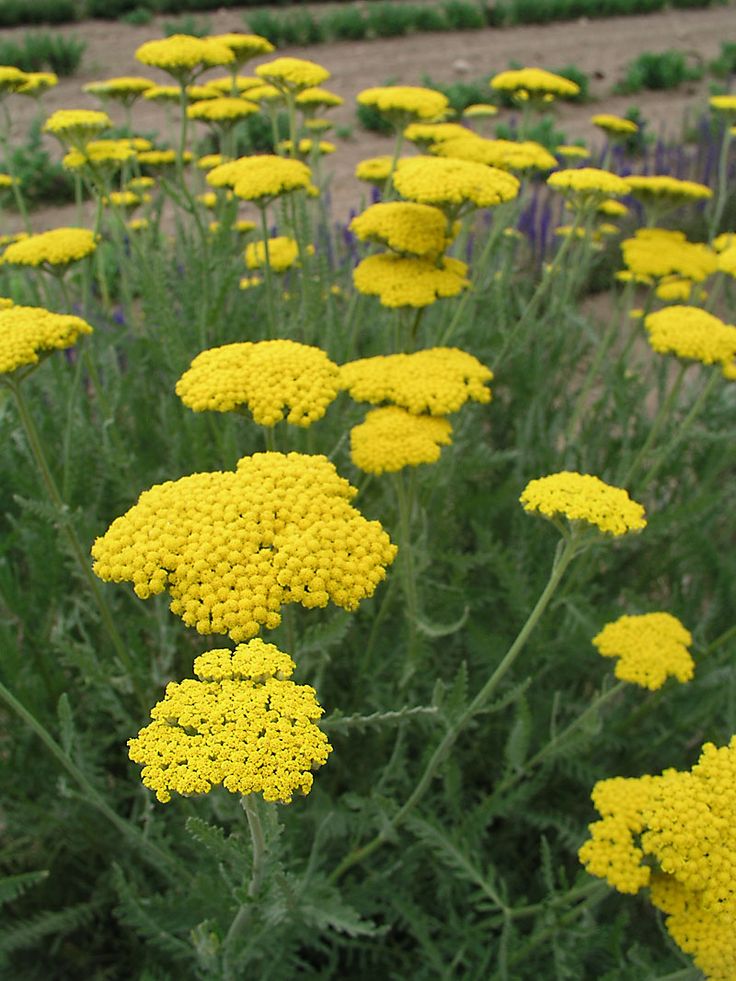Achillea 'Moonshine'

Achillea 'Moonshine', commonly known as Moonshine yarrow, stands as a beacon of radiance in gardens and landscapes across the world.
With its vibrant yellow flowers and aromatic foliage, this cultivar of Achillea is celebrated for its beauty, versatility, and ease of care.
In this comprehensive article, we will explore the botanical intricacies, habitat preferences, ecological roles, conservation status, and care guidelines for Achillea 'Moonshine'.
Botanical Description
Achillea 'Moonshine' is a herbaceous perennial plant characterized by its fern-like, silvery-gray foliage and clusters of vibrant yellow flowers.
The plant typically forms dense clumps or mounds, with individual stems reaching heights of 1 to 2 feet (30 to 60 cm).
The leaves are finely divided and aromatic when crushed, emitting a pleasant fragrance. In summer, 'Moonshine' yarrow produces flat-topped flower clusters composed of numerous tiny, daisy-like flowers with yellow rays and yellow centers.
These flowers attract pollinators such as bees and butterflies, adding to the plant's charm and ecological value.
Habitat and Distribution
Moonshine yarrow is native to the temperate regions of Europe and Asia, where it can be found growing in a variety of habitats, including meadows, grasslands, and open woodlands.
It thrives in well-drained soils and full sun but can also tolerate partial shade and a range of soil types.
'Moonshine' yarrow is widely cultivated as an ornamental plant in gardens and landscapes worldwide, where it adds bright color and texture to borders, rock gardens, and cottage-style plantings.
Life Cycle and Phenology
As a perennial plant, Achillea 'Moonshine' undergoes a yearly life cycle marked by seasonal growth and flowering.
New growth emerges in spring, with the plant reaching full maturity by early summer.
Flowering typically occurs from late spring to midsummer, with the peak bloom period lasting several weeks.
Deadheading spent flowers can encourage continuous blooming throughout the growing season.
In fall, the foliage may turn bronze or brown, providing visual interest until frost.
Ecological and Cultural Importance
Achillea 'Moonshine' holds both ecological and cultural significance. In gardens and landscapes, it serves as a valuable pollinator plant, attracting bees, butterflies, and other beneficial insects with its abundant nectar and pollen.
Additionally, 'Moonshine' yarrow has a long history of medicinal and culinary use. The leaves and flowers contain aromatic oils with reputed anti-inflammatory and antiseptic properties, while the flowers can also be used to make herbal teas and infusions.
In folklore and herbalism, yarrow is associated with various symbolic meanings and uses, ranging from divination to protection and healing.
Conservation and Threats
While Achillea 'Moonshine' is not currently listed as threatened or endangered, habitat loss and degradation pose significant threats to populations of wild yarrow species.
Urbanization, agriculture, and land development all contribute to the decline of natural habitats where yarrow grows.
Additionally, invasive species encroachment and climate change further exacerbate these threats, altering ecosystems and disrupting native plant communities.
Conservation efforts focused on habitat preservation, restoration, and public education are essential for safeguarding the diversity and ecological integrity of yarrow populations.
Caring for Achillea 'Moonshine'
Sunlight
Plant 'Moonshine' yarrow in a location that receives full sunlight for at least 6 to 8 hours per day.
While it can tolerate some shade, full sun encourages the best growth and flowering.
Watering
Yarrow is drought-tolerant once established and prefers well-drained soils.
Water deeply but infrequently, allowing the soil to dry out slightly between waterings.
Avoid overwatering, as this can lead to root rot and other issues.
Soil
Provide well-drained, sandy or loamy soil with a neutral to slightly alkaline pH.
Amend heavy clay or compacted soil with organic matter such as compost to improve drainage and fertility.
Mulching
Apply a layer of organic mulch, such as shredded bark or wood chips, around the base of the plant to help retain soil moisture and suppress weed growth.
Keep the mulch pulled back several inches from the stems to prevent rot.
Pruning
Deadhead spent flowers regularly to encourage continuous blooming and prevent self-seeding.
Cut back the foliage in late fall or early spring to rejuvenate the plant and promote healthy growth.
By following these care guidelines, you can cultivate healthy and vibrant Achillea 'Moonshine' plants in your garden or landscape, contributing to the beauty and ecological diversity of your outdoor space.
Whether used as a pollinator plant, medicinal herb, or ornamental accent, 'Moonshine' yarrow is sure to brighten your garden with its cheerful blooms and aromatic foliage.
Leave a Reply
You must be logged in to post a comment.